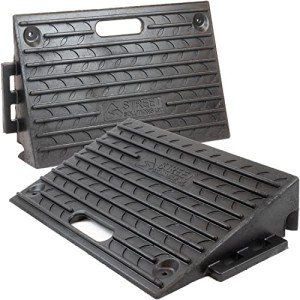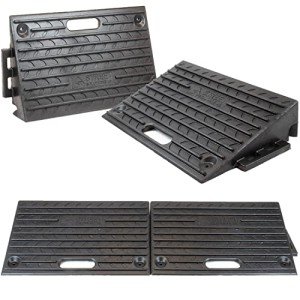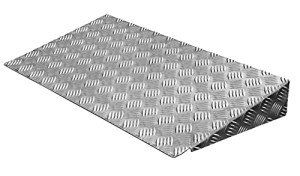Portable Anti-Slip Wheelchair Ramp for Steps: A Comprehensive Guide
In a world that strives for accessibility, the importance of mobility aids such as wheelchair ramps cannot be overstated. Among the various options available, portable anti-slip wheelchair ramps are becoming increasingly popular for their convenience and safety features. This guide will explore the significance of these ramps, their benefits, factors to consider when purchasing one, and frequently asked questions.
Understanding the Need for Portable Anti-Slip Wheelchair Ramps
For individuals with mobility challenges, navigating steps can be a daunting task. Wheelchair users, in particular, require reliable support to overcome elevation changes safely. Standard ramps may not always be feasible due to space constraints, while permanent installations can be costly and impractical.
Key reasons to consider portable anti-slip wheelchair ramps include:
- Enhanced Mobility: These ramps facilitate easier movement for wheelchair users in various environments, whether at home, work, or public spaces.
- Safety Features: The anti-slip surface significantly reduces the risk of accidents, especially in wet conditions.
- Portability: Unlike permanent ramps, portable options can be easily transported and set up wherever needed.
- Versatility: Many portable ramps can accommodate different types of mobility aids, including scooters, walkers, and strollers.
Benefits of Portable Anti-Slip Wheelchair Ramps
When evaluating the effectiveness of portable anti-slip wheelchair ramps, several benefits emerge, making them a worthy investment for anyone who requires assistance navigating stairs or curbs.
1. Safety First
The anti-slip design of these ramps is crucial for preventing slips and falls. Many models incorporate textured surfaces, giving users extra grip as they ascend or descend. For those living in areas prone to wet weather, this feature is particularly valuable.
2. Lightweight and Convenient
Most portable ramps are designed to be lightweight, facilitating easy transport. They can often be folded or collapsed, fitting neatly into a trunk or storage area.
3. Adjustable Heights
Various models offer adjustable lengths and heights to cater to different step sizes, ensuring maximum versatility in various situations.
4. Affordable Solution
Portable anti-slip wheelchair ramps present a budget-friendly alternative to installing permanent ramps, which can incur significant costs for materials and labor.
5. Easy to Use
Accessibility is at the forefront of portable ramp designs. Most manufacturers prioritize user-friendly features, ensuring simple setup and takedown.
Factors to Consider When Purchasing a Portable Anti-Slip Wheelchair Ramp
While the benefits of portable anti-slip wheelchair ramps are clear, potential buyers should consider various factors to select the right model for their needs.
1. Weight Capacity
Before purchasing, it’s essential to ensure the ramp can support the combined weight of the wheelchair user and their mobility device. Look for ramps with specified weight limits, typically ranging from 300 to 800 pounds.
2. Ramp Material
Ramps are generally constructed from aluminum or fiberglass. Aluminum ramps are lightweight, durable, and weather-resistant, making them an ideal choice for outdoor use. Fiberglass ramps, while sometimes heavier, can offer improved stability on uneven surfaces.
3. Length of the Ramp
The length of the ramp is critical for ensuring a safe incline. A steeper ramp can be challenging to navigate, particularly for manual wheelchair users. A general rule of thumb is to have a ratio of 1:12 (1 inch of height requires 12 inches of ramp length), though this may vary based on the user's strength and ability.
4. Portability Features
Consider how easily the ramp can be transported. Features such as folding designs, built-in handles, or lightweight construction significantly enhance portability.
5. Surface Design
The texture of the ramp's surface is vital for ensuring anti-slip properties. Many models have a gritty surface or rubberized material to prevent slipping.
FAQ
1. How do I determine if a ramp is the right size for my stairs?
To determine the right ramp size, measure the height of the step. Then, using the 1:12 ratio, calculate the length required for a safe incline. For example, if the step is 6 inches high, the ramp should be at least 72 inches (or 6 feet) long.
2. Can I use a portable ramp outdoors?
Yes, many portable ramps are designed for outdoor use. Look for ramps that are made with weather-resistant materials and have anti-slip surfaces suitable for various weather conditions.
3. How do I maintain my portable ramp?
Regularly inspect the ramp for any signs of wear and tear. Clean the surface to remove dirt and debris, which can reduce traction. Ensure hinges or joints function smoothly if the ramp is foldable.
4. Is it necessary to secure the ramp while in use?
Yes, securing the ramp using non-slip devices or clamps is recommended to prevent movement and ensure safety during use.
5. Are there guidelines for using ramps in public places?
Yes, several regulations such as the Americans with Disabilities Act (ADA) provide guidelines on wheelchair ramps' design and placement in public spaces. It's essential to familiarize oneself with these regulations to ensure compliance.
Portable anti-slip wheelchair ramps are invaluable tools for improving mobility and accessibility for individuals with mobility challenges. With countless benefits, including safety, portability, and affordability, these ramps are an excellent investment. By carefully considering factors such as weight capacity, material, length, and surface design, users can select the best ramp to meet their specific needs and facilitate a smoother journey through life’s various elevations.







